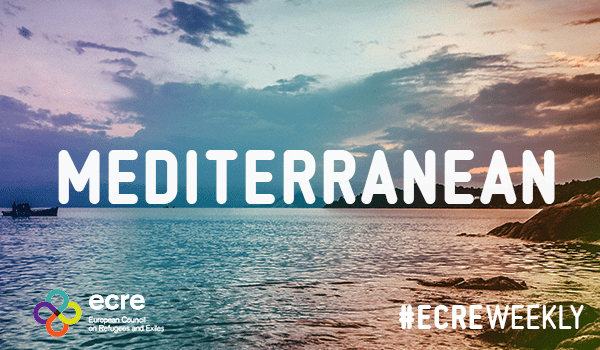According to new IOM figures, 22,419 people have been ‘pulled-back’ to Libya from the Mediterranean so far in 2021, compared with 11,891 in the whole of 2020. The civilian rescue vessel SEA-EYE 4 has been released after three months of detention by Sicilian authorities, and the Moonbird civil reconnaissance aircraft is back in operation.
To date in 2021, the IOM has reported 392 people dead and another 632 missing in the Mediterranean, dubbed Europe’s ‘graveyard’. The UN agency recorded four times as much loss of life in the second quarter of 2021 compared with the same period of 2020. According to NGOs, both Libyan and European authorities continue to ignore alerts from people in distress at sea. Sea-Watch reported on 23 August that 22 people, including nine children, were left to wait ten hours for an Italian response while Maltese authorities remained unresponsive. On 22 August, 16 people, including one child, died after their boat capsized off Libya.
On 23 August the Médecins Sans Frontières (MSF) rescue ship Geo Barents docked in Sicily after waiting several days for approval to disembark 322 people, including 95 children. 85 of the children were unaccompanied, and five were under the age of five, including one new-born. Other landings in Italy include a further 167 people disembarked on Lampedusa, 127 people taken to the port of Crotone, and roughly a hundred migrants arriving in Calabria. On the 23 and 24 August, 75 people were disembarked in Lampedusa.
NGOs conducting monitoring and rescues in the Mediterranean continue to be the target of administrative and judicial proceedings launched by European states, allegedly as part of an ongoing crackdown on humanitarian activity at EU borders. Most recently, the SEA-EYE 4 was detained after saving 408 lives in May on the grounds of certification problems and insufficient waste disposal capacity onboard. After three months of detention in Sicily, the boat was released on 18 August. On 21 August, Sea-Watch announced that their Moonbird plane, one of two civilian aerial reconnaissance assets used to monitor shipwrecks and people in distress in the Mediterranean, was back in action. Since 2018, national authorities, most notably Italy have been hindering civilian rescue efforts by impounding vessels, limiting access to European ports, and manufacturing disembarkation delays. The Court of Justice of the EU has been asked to rule on whether such blockage is lawful. In the meantime, NGOs insist that it is part of a strategy to defer SAR responsibility to the Libyan Coast Guard and prevent oversight of migrant suffering at sea. According to Sea-Watch, “the EU is trying, by all means, to close the civil eye on the Mediterranean, making human rights violations invisible”.
During the week of 15-21 August, 374 migrants were returned to Libya after interception at sea. This follows a trend of expanded Libyan ‘pullbacks’: the number of people intercepted and returned to Libya in the first eight months of the year is already nearly double that of the whole of 2021. Some 6,000 migrants are held in detention centres in Libya, in conditions deemed “inhuman”, “nightmarish” and “appalling” by UN agencies and NGOs. Disappearances are also widespread, and many migrants are extorted or end up in the hands of traffickers. Given the systematic human rights violations that migrants are exposed to in Libya, OHCHR and other UN agencies have repeatedly stated that the country cannot be considered a port of safety for rescued migrants.
For further information:
- ECRE, Med: UN Condemnation of Returns to Unsafe Libya by Merchant Ship, Survivors Rescued in Maltese SAR Zone Accepted by Italy, Parliament President Urges EU Lead on Rescues at Sea, June 2021
- ECRE, Med: EU Tour de Migration Control Continues as Do Returns to Libya and Crack-Down on Civil SAR despite No Evidence of Pull-factor, June 2021
Photo: ECRE
This article appeared in the ECRE Weekly Bulletin. You can subscribe to the Weekly Bulletin here.

